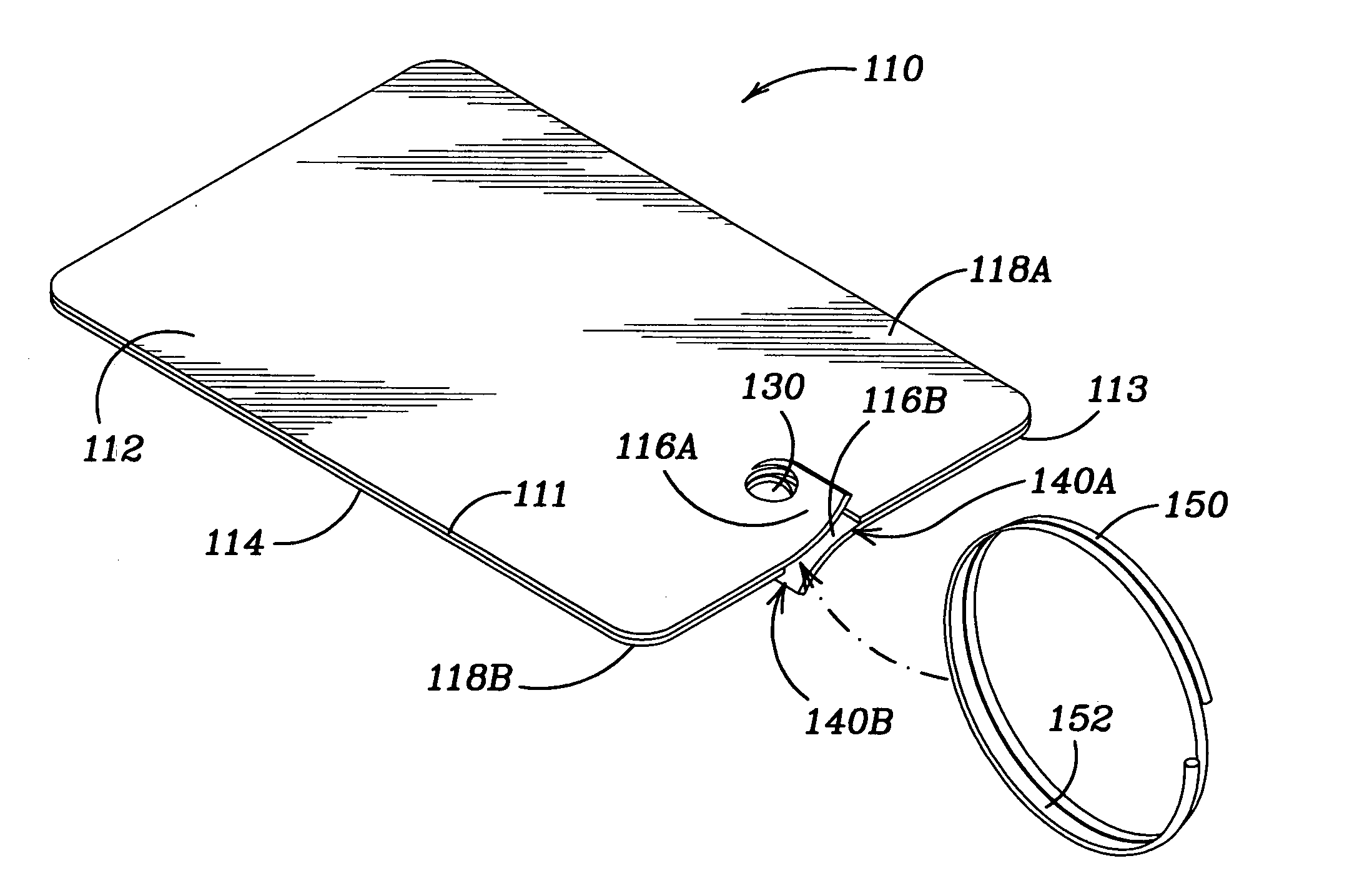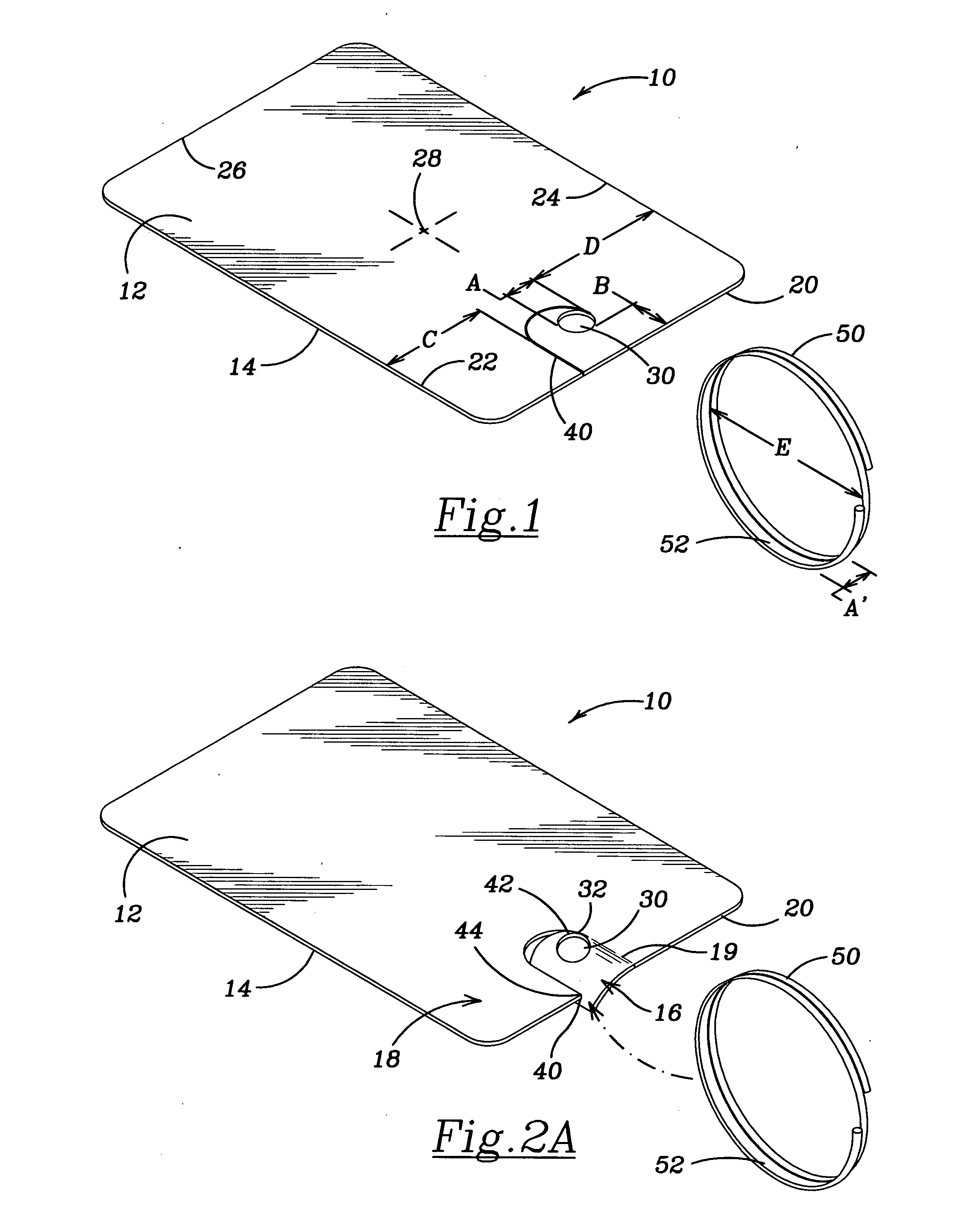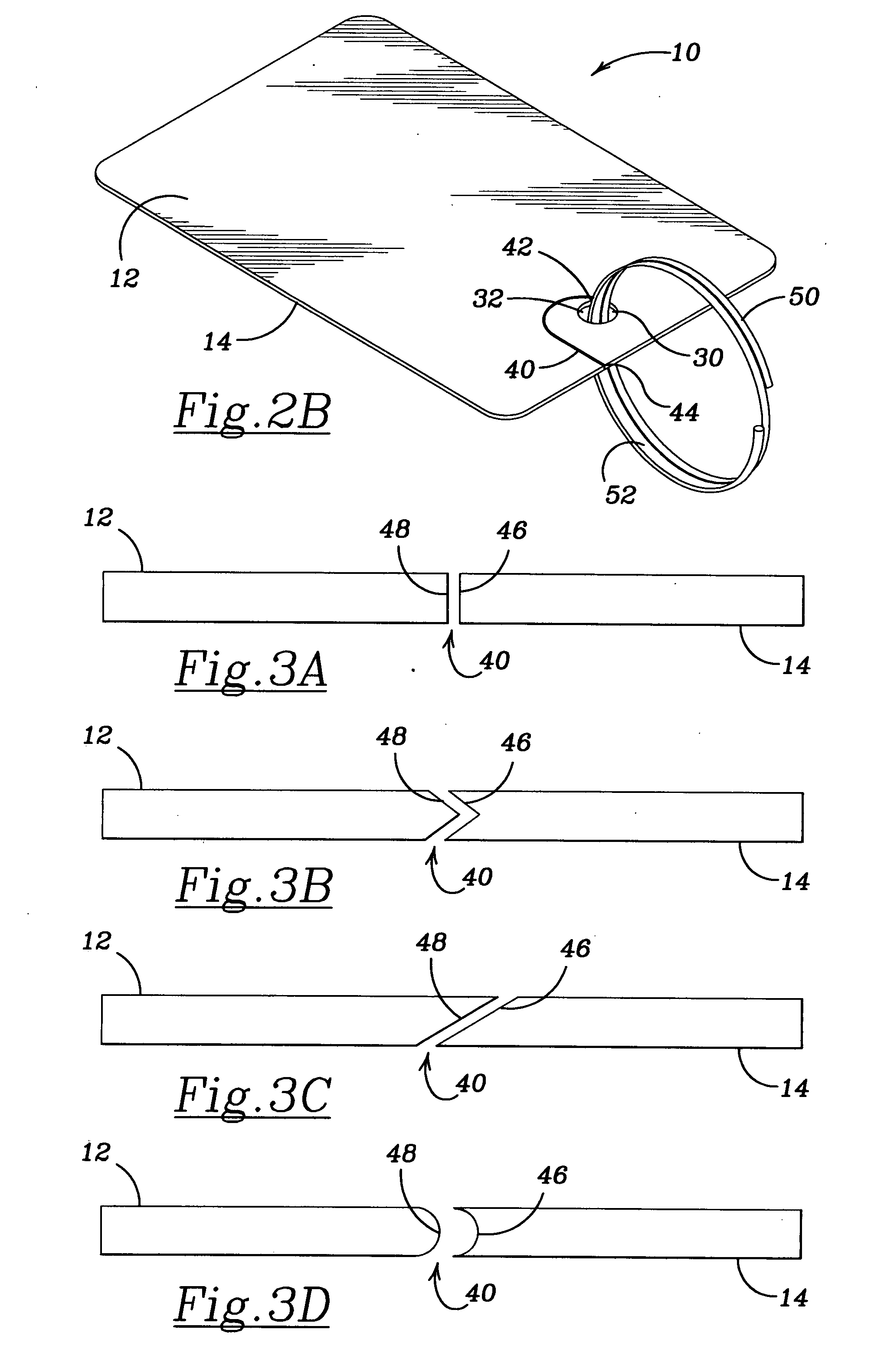Removably attachable card and card retaining device
a technology of attachable cards and retaining devices, which is applied in the field of removable cards, can solve the problems of people forgetting to return cards, cards falling out of wallets, and inconvenience due to the loss of credit cards, and achieves the effect of easy and cost-effective manufacturing
- Summary
- Abstract
- Description
- Claims
- Application Information
AI Technical Summary
Benefits of technology
Problems solved by technology
Method used
Image
Examples
Embodiment Construction
[0055]The following detailed description is of the best presently contemplated mode of carrying out the invention. The description is not intended in a limiting sense, and is made solely for the purpose of illustrating the general principles of the invention. The various features and advantages of the present invention may be more readily understood with reference to the following detailed description taken in conjunction with the accompanying drawings.
[0056]Referring now to the drawings in detail, where like numerals refer to like parts or elements, there is shown an improved information-bearing card 10 and card retaining member 50 for removably securing the card to the card retaining member along with the primary elements of the present invention. The invention requires the card 10 to be configured with an aperture 30 and a slot 40, with the aperture 30 being located within the body of the card and the slot 40 running from the aperture 30 to an edge of the card. Further structural...
PUM
 Login to View More
Login to View More Abstract
Description
Claims
Application Information
 Login to View More
Login to View More - R&D
- Intellectual Property
- Life Sciences
- Materials
- Tech Scout
- Unparalleled Data Quality
- Higher Quality Content
- 60% Fewer Hallucinations
Browse by: Latest US Patents, China's latest patents, Technical Efficacy Thesaurus, Application Domain, Technology Topic, Popular Technical Reports.
© 2025 PatSnap. All rights reserved.Legal|Privacy policy|Modern Slavery Act Transparency Statement|Sitemap|About US| Contact US: help@patsnap.com



